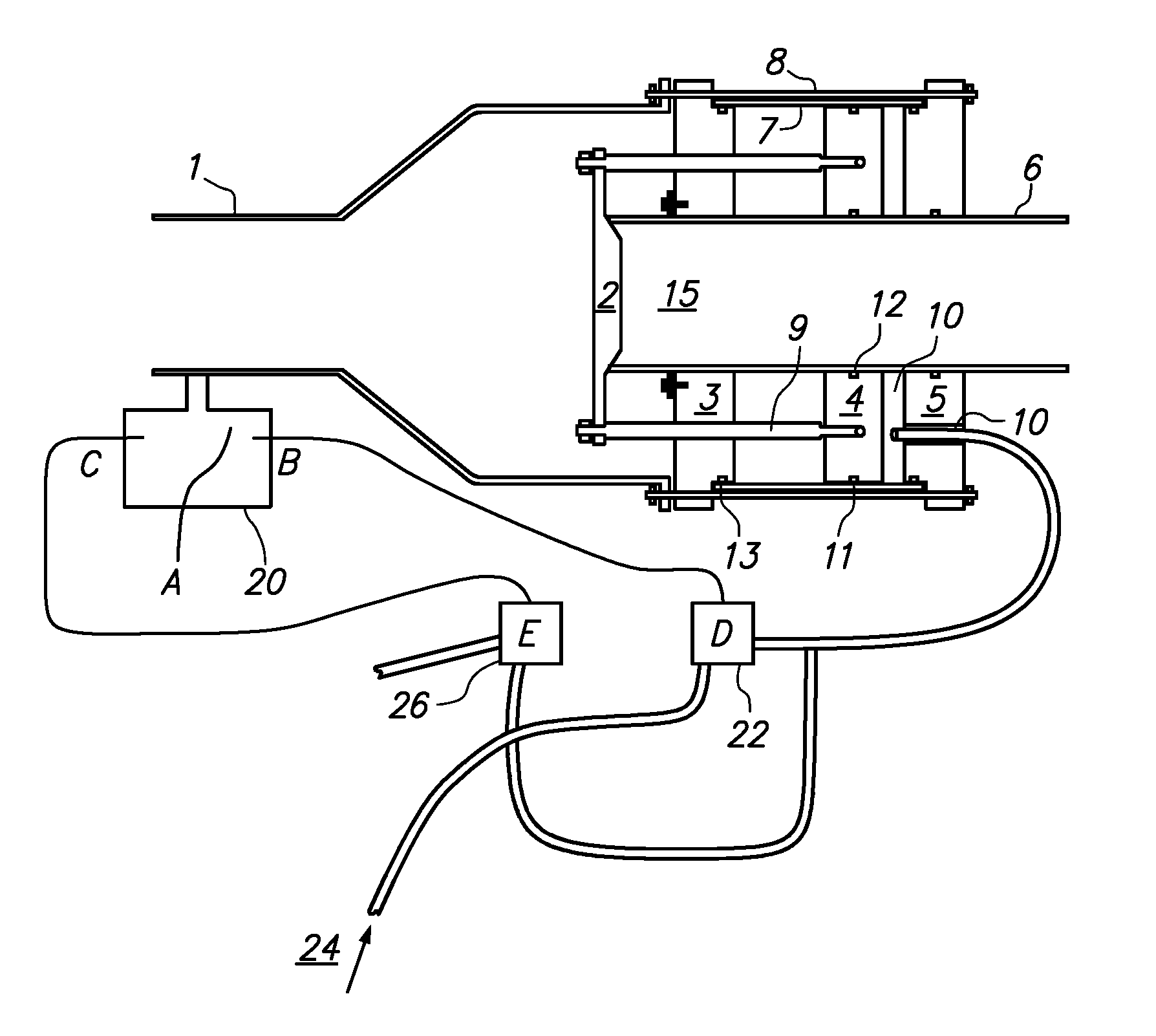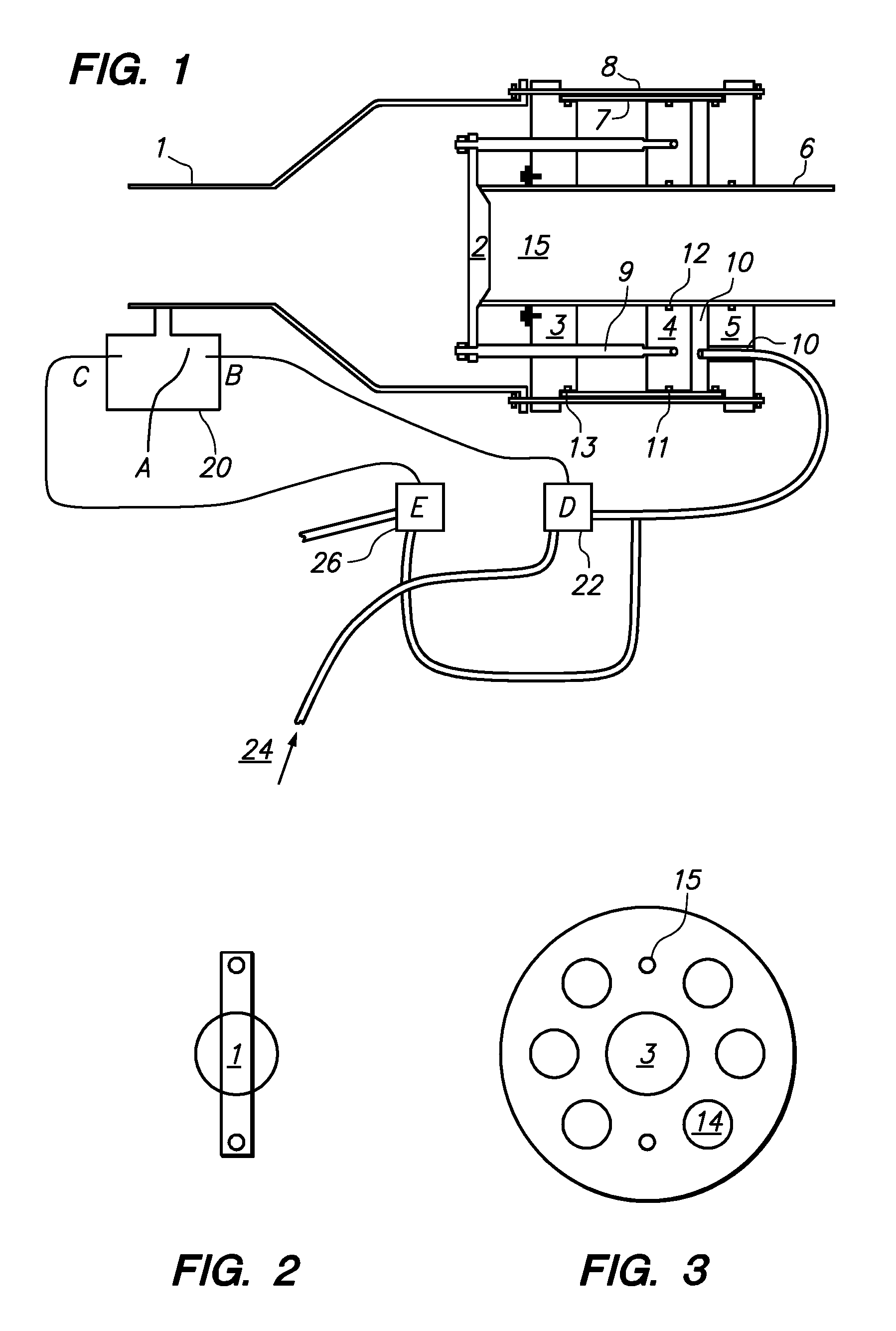Pressure regulator
- Summary
- Abstract
- Description
- Claims
- Application Information
AI Technical Summary
Benefits of technology
Problems solved by technology
Method used
Image
Examples
Embodiment Construction
[0015]With reference now to FIGS. 1-3, a preferred embodiment of the present invention may be described. Liquid, preferably water, enters the regulator from a hydrant or other high-pressure source at inlet 6. Discharge chamber 1 may be preferably connected to a CAFS (not shown), many types of which are known in the art and fall within the scope of the invention. Regulating the flow of liquid between inlet 6 and discharge chamber 1 is valve 2. In the closed position, as shown in FIG. 1, valve 2 completely blocks the flow of liquid out of inlet 6 by seating itself at the outflow end of inlet 6. When valve 2 is open, however, liquid may flow around the periphery of valve 2 from inlet 6 into discharge chamber 1. From discharge chamber 1, liquid may enter the CAFS system where it is mixed with air and surfactant to produce foam in a manner as known in the art.
[0016]Connecting links 9 attach valve 2 to piston 4. Two connecting links 9 are shown in the cut-away view of FIG. 1, but any numb...
PUM
 Login to View More
Login to View More Abstract
Description
Claims
Application Information
 Login to View More
Login to View More - R&D
- Intellectual Property
- Life Sciences
- Materials
- Tech Scout
- Unparalleled Data Quality
- Higher Quality Content
- 60% Fewer Hallucinations
Browse by: Latest US Patents, China's latest patents, Technical Efficacy Thesaurus, Application Domain, Technology Topic, Popular Technical Reports.
© 2025 PatSnap. All rights reserved.Legal|Privacy policy|Modern Slavery Act Transparency Statement|Sitemap|About US| Contact US: help@patsnap.com


